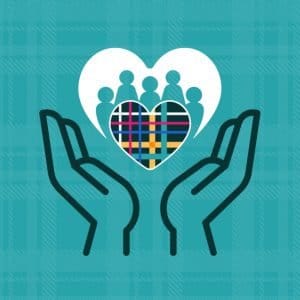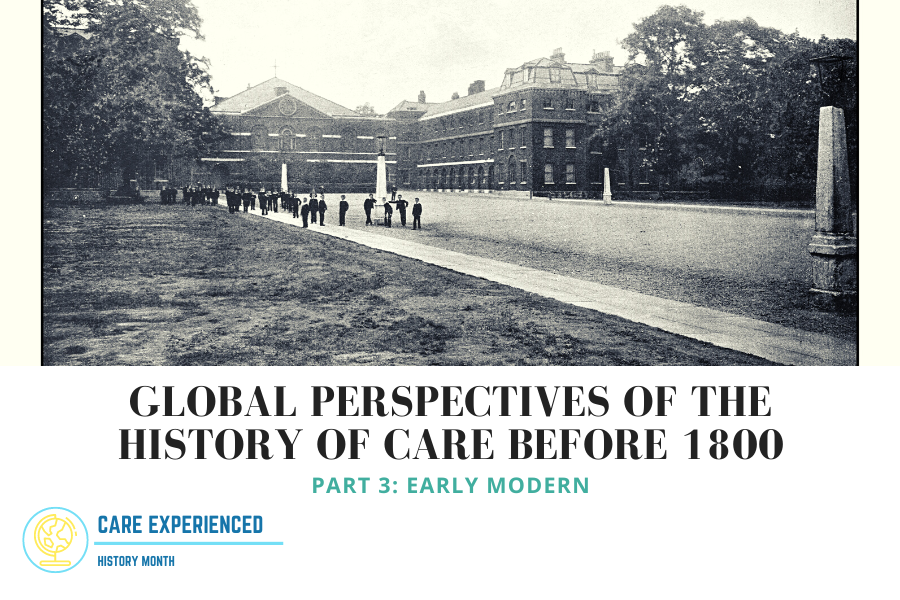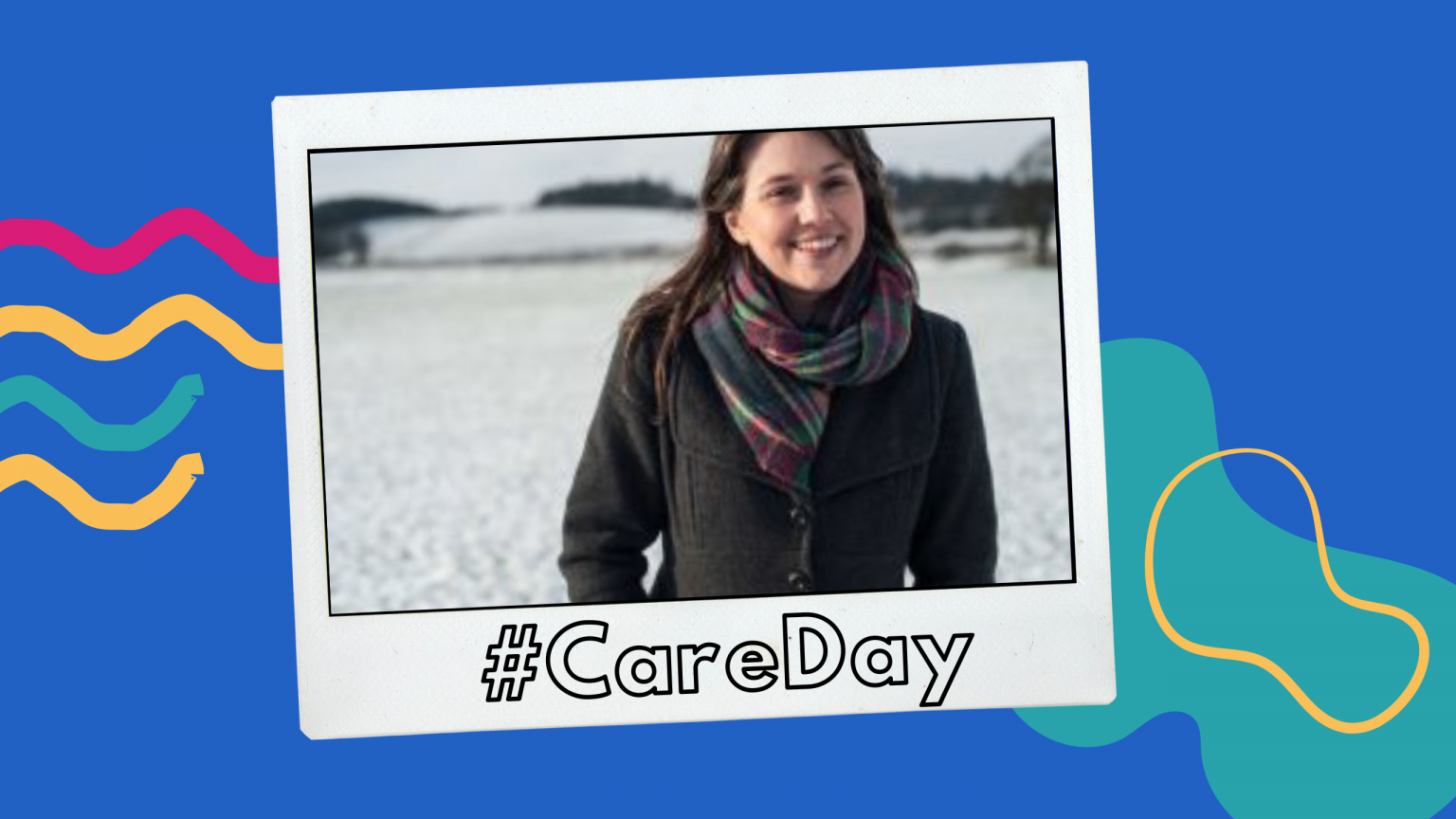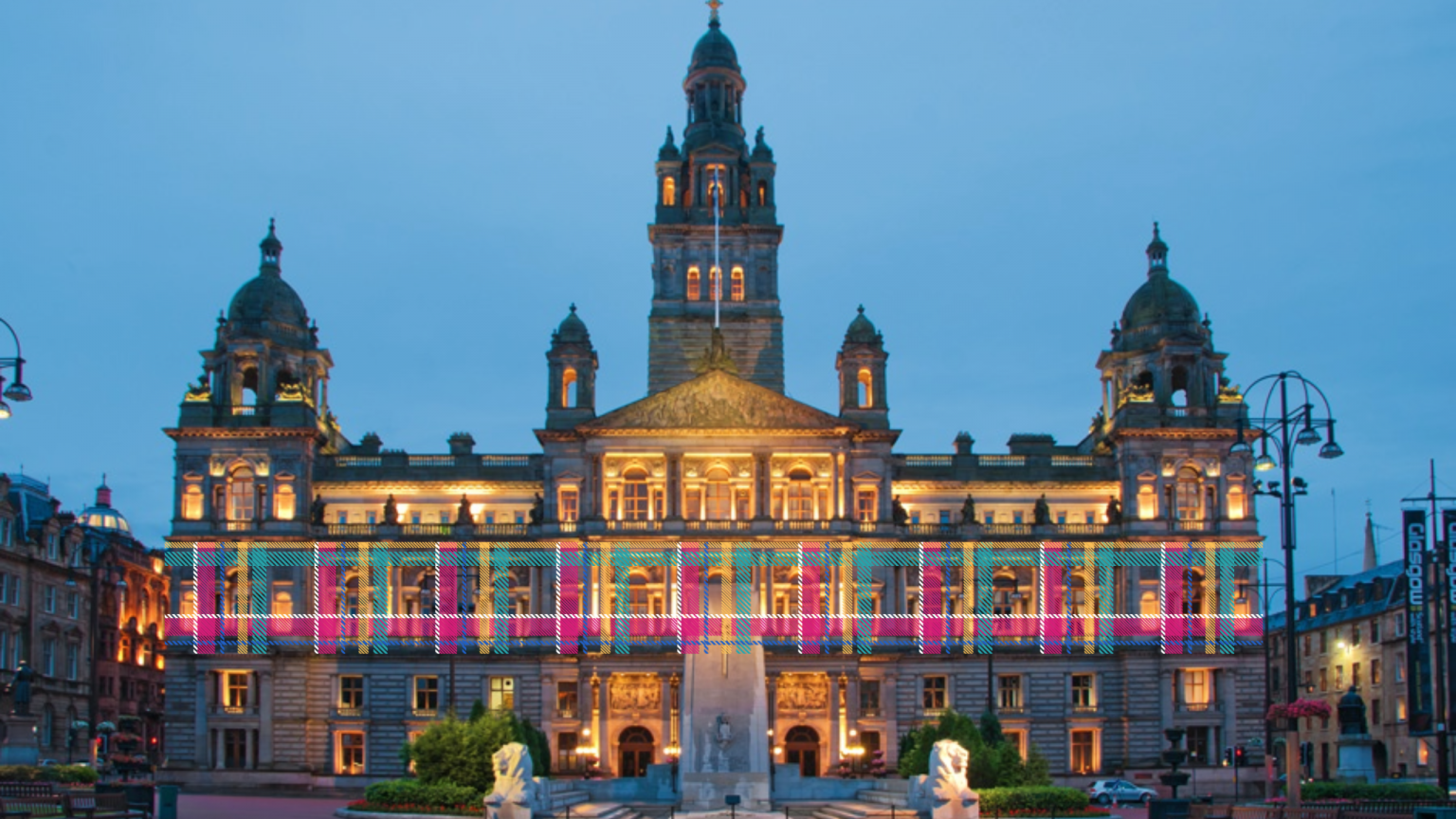Written By Amanda Gavin
Care Experienced History Month calls for the global recognition of the history of Care Experienced people.
This blog series hopes to give a whirlwind overview of Care Experience in the very distant past, from the ancient to the early modern, across various places. It intends to be a starting point, rather than a definitive History.
EARLY MODERN PERIOD (c.1500 – 1800)
In a way, institutionalisation was far worse for children than the informal foster care arrangements which characterised earlier periods of history. These large institutions existed during a time where there was little understanding of hygiene and before the advancements of modern medicine. As a result, many children did not survive. By the 1600s, La Couche was known locally as Maison de Mort – House of Death.
The infant mortality rate in seventeenth century Paris was extremely high; around half of all babies died. The mortality rate in the foundling hospital was even higher: most of the babies sent there did not survive. In large part, this can be explained by the widespread use of wet nurses; in eighteenth century France around 90% of babies were wet nursed, with most being sent away to live with them.
Wet nurses employed by foundling hospitals, mostly on very low pay, were frequently blamed for the deaths of infants. If they themselves were undernourished and nursing several babies at once, the milk may have provided little sustenance. Wet nurses were often deeply attached to the children and in one instance in Italy, a wet nurse and her husband asked to keep the child she had been paid to nurse because they ‘loved her.’ Many children continued to be fostered by their wet nurses long after they had been weaned.
The number of Care Experienced people in eighteenth century Paris was extremely significant; in 1770, it is estimated that 35% of children born in Paris were ‘abandoned’. This number, of course, does not include those who entered ‘care’ later in childhood. The true proportion of the Parisian populace who were Care Experienced at this time is likely much higher.
Many of Paris’ most famous citizens had started their lives as ‘foundlings’. For instance, Jean le Rond d’Alembert (1717-1783), who was placed as a baby in a foundling hospital, went on to become an influential mathematician and co-editor of the Encylopédie. In France today, the fundamental theorem of algebra is named after d’Alembert.
Children across Europe continued to be looked after in foundling hospitals. In London, the Foundling Hospital admitted its first children in 1741. On entrance, a note was made of distinguishing marks or tokens, such as marked coins, pieces of ribbon or playing cards, that could later be used to reclaim a child.
Foundlings have always been described as ‘abandoned’ but many parents, usually mothers, travelled great distances to place their child somewhere they felt was safe and would provide them with a better life. Neither the mother nor the babies’ names were recorded by the hospital, but the identifying tokens were carefully preserved. Providing a description of the token, or any identifying features such as a birth mark, was the only way a mother could reclaim her child. The presence of a personal token suggests an intention to return for their child, even if many were never able to.
In 1756 the House of Commons stated that all children offered to the London Foundling Hospital should be received, and that the institutions should be publicly funded. The maximum age for admission was raised from two months to twelve and countless children who were previously in workhouses entered the Hospital.
In less than four years, 14,934 children were presented to the Foundling Hospital in London. As a result, a nasty trade developed where vagrants would promise to deliver children to the Foundling Hospital, for a fee. One such woman, who travelled from Yorkshire, cruelly placed four babies in two panniers slung across a horse’s back. Others reported that some removed the babies’ clothing in order to sell it before placing them in the basket outside of the Foundling Hospital. Several babies did not survive this journey. Others were never delivered at all.
Out of some 15,000 children who were presented to the Hospital, only 4,400 survived to be apprenticed out. Having spent £500,000, the House of Commons removed the hospital’s funding and concluded that they should no longer accept all children. The Hospital could only accept children for a considerable sum of money. The British Government, it seems, were able to put a price on human life.
From those who traded in ‘delivering’ children to the hospital to some of those were employed there directly, they displayed little respect for the lives of the children in their ‘care’. Perhaps most stark an illustration is the case of Mary Clifford, aged 14, who was murdered in 1767 by her caregiver, Elizabeth Brownrigg (1720-1767), a midwife who was given custody of several girls from the London Foundling Hospital as domestic servants.
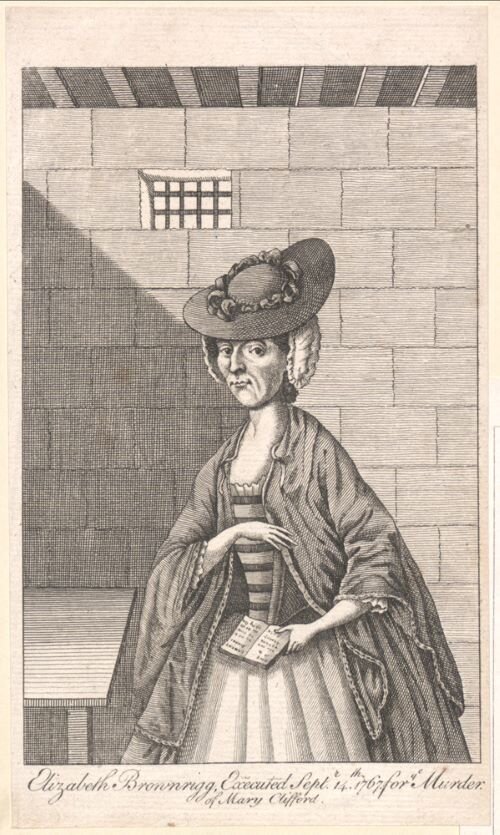
Elizabeth Brownrig, c1767.
Brownrigg had a history of abusing her charges, often stripping them naked, chaining them to beams or pipes and whipping them. Mary Jones, one of her earlier charges, managed to run away from her house and return to the safety of the Foundling Hospital where she disclosed her abuse. The only action taken, however, was that the Hospital Governors demanded that Mr Brownrigg was to keep his wife ‘in check’. Brownrigg was found guilty of murder and hanged at Tyburn on 14 September 1767.
By 1800, the number of foundling hospitals and orphanages had proliferated across many parts of the world. Even when the buildings themselves are no longer standing, these institutions are visible to us now due to their bureaucratic nature which left behind a written historical record. Moreover, some of these historic institutions are within living memory; the London Foundling Hospital only closed its doors in 1954.
For those Care Experienced people in the past who were not emperors or famous physicians, or as is often the case not men, their voices can be much harder to find in the historical record. Thankfully, this becomes less true over time as more documents have survived, and perhaps more importantly, literacy levels rose.
If we only take the time to look, we find that Care Experienced people have always been here, shaping the course of History.
A NOTE ON LANGUAGE
Many of the terms used in the past have long since fallen out of use, or are now deemed offensive. Sometimes, words used in the past have no direct translation to the present day. Similarly, terms we use today would not translate well to the past. A person living in Ancient Egypt or Medieval England would not identify themselves as Care Experienced, even if by our understanding they were.
Foundling – a historic term used to describe babies who had been abandoned by their parents and discovered and cared for by others. Infants referred to as foundlings were nearly always placed somewhere, such as a church, where the baby’s parents or midwife knew they would be found and cared for. Foundlings were extremely common in the eighteenth century. The word originates in c.1300 in Middle English.
Oblate – A child vowed and given by their parents to monastic life. Child oblation was practiced in Early Medieval Europe.
Orphan – traditionally defined as a child whose parents have died. Many children called ‘orphans’ had one or both living parents but were ‘cared’ for someone other than their parents, often in an orphanage or children’s home. The word originates from Ancient Greek.
Find out more:
Alysa Levene, Childcare, Health and Morality in the London Foundling Hospital, 1741-1800: ‘Left to the Mercy of the World’ (2012)
Anne E. C. McCants, Civic Charity in a Golden Age: Orphan Care in Early Modern Amsterdam (1997)
Anne E. Lester, ‘Lost but not yet Found: Medieval Foundlings and their Care in Northern France, 1200-1500’, Journal of the Western Society for French History 35 (2007)
Catriona Seth, Nobody’s Children? Enlightenment Foundlings, Identity and Individual Rights, Burgerhart Lecture, 4 October 2012
Diana Bullen Prescuitti, ‘Dead Infants, Cruel Mothers, and Heroic Popes: The Visual Rhetoric of Foundling Care at the Hospital of Santo Spirito, Rome’, Renaissance Quarterly 64:3 (2011), pp.752-799
Dona Schneider and Susan M. Macey, ‘Foundlings, Asylums, Almshouses and Orphanages: Early Roots of Child Protection’, Middle States Geographer 35 (2002), pp.92-100
Greg Peters, ‘Offering Sons to God in the Monastery: Child Oblation, Monastic Benevolence, and the Cistercian Order in the Middle Ages’, Cistercian Studies Quarterly 38:3 (2003)
J. L. van Zanden, The Rise and Decline of Holland’s Economy: Merchant Capitalism and the Labour Market (1993), p.77
Joanne M. Ferraro, ‘Childhood in Medieval and Early Modern Times’ in The Routledge History of Childhood in the Western World, ed. Paula F. Fass (2012)
John Brownlow, Memoranda; or Chronicles of the Foundling Hospital Including Memoirs of Captain Coram (1847)
Jonathan A. Silk, ‘Child Abandonment and Homes for Unwed Mothers in Ancient India: Buddhist Sources’, Journal of the American Oriental Society 127:3 (2007), pp.297-314
Kathryn Hughes, Threads of Feeling, The Guardian, 9 October 2010
La Couche/Hospice des Enfants Trouvés, Paris, France, Children’s Homes
Miranda Brown and Rafe de Crespigny, ‘Adoption in Han China’, Journal of Economic and Social History in the Orient 52:2 (2009), pp.229-266
Old Bailey Proceedings Online (version 8.0, 15 March 2021), September 1767, trial of James Brownrigg, Elizabeth his wife James Brownrigg John their son (t17670909-1)
Rachel Fuchs, Foundlings and Child Welfare in Nineteenth-Century France (1984)
Ruth Wallis Herndon and John E. Murray, Children Bound to Labor: The Pauper Apprentice System in Early America (2009)
S. X. Radbill, ‘A History of Children’s Hospitals’, American Journal of Diseases of Children 90 (1955), pp.411-413
S. X. Radbill, ‘Reared in Adversity: Institutional Care of Children in the 18th Century’, American Journal of Diseases of Children 130 (1976), pp.751-761
Sandra Lippert, Universität Tübingen, Germany, UCLA Encyclopaedia of Egyptology, 2013
Susan L. Porter, ‘Indenture and Adoption in Nineteenth-Century Orphanages’ in Adoption in America: Historical Perspectives, ed. E. Wayne Carp (2002), pp.27-51
Susanah Shaw Romney, ‘Intimate Networks and Children’s Survival in New Netherland in the Seventeenth Century’, Early American Studies 7:2 (2009), pp.270-308
The Foundling Museum, What is a Foundling?
The Library of Iberian Resources Online, The Visigothic Code, ed. S. P. Scott, Book IV: Concerning Natural Lineage, Title IV: Concerning Foundlings.
Thomas S. N. Chen and Peter S. Y. Chen, ‘Jivaka, Physician to the Buddha’, Journal of Medical Biography 10 (2002), pp.88-91
